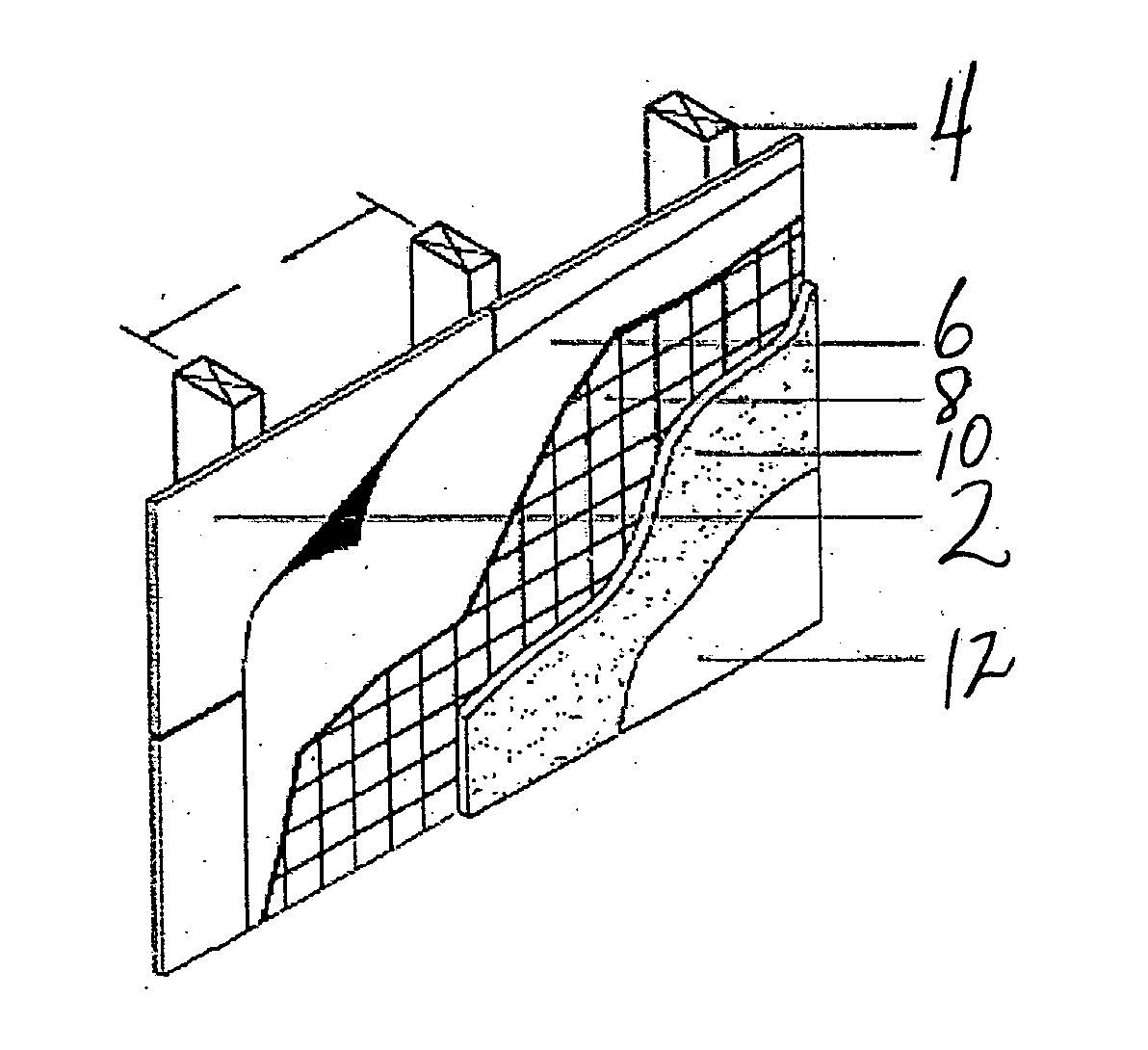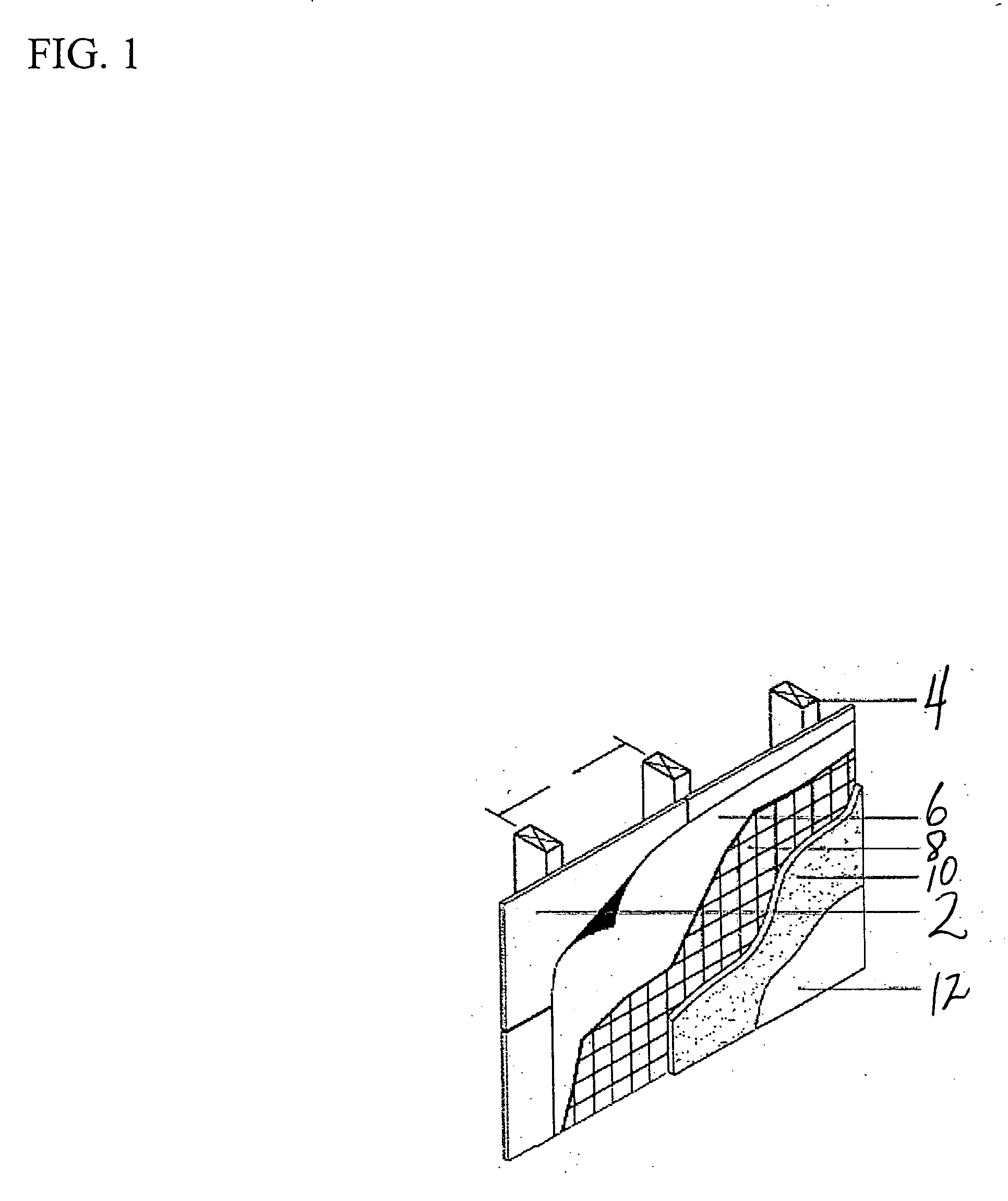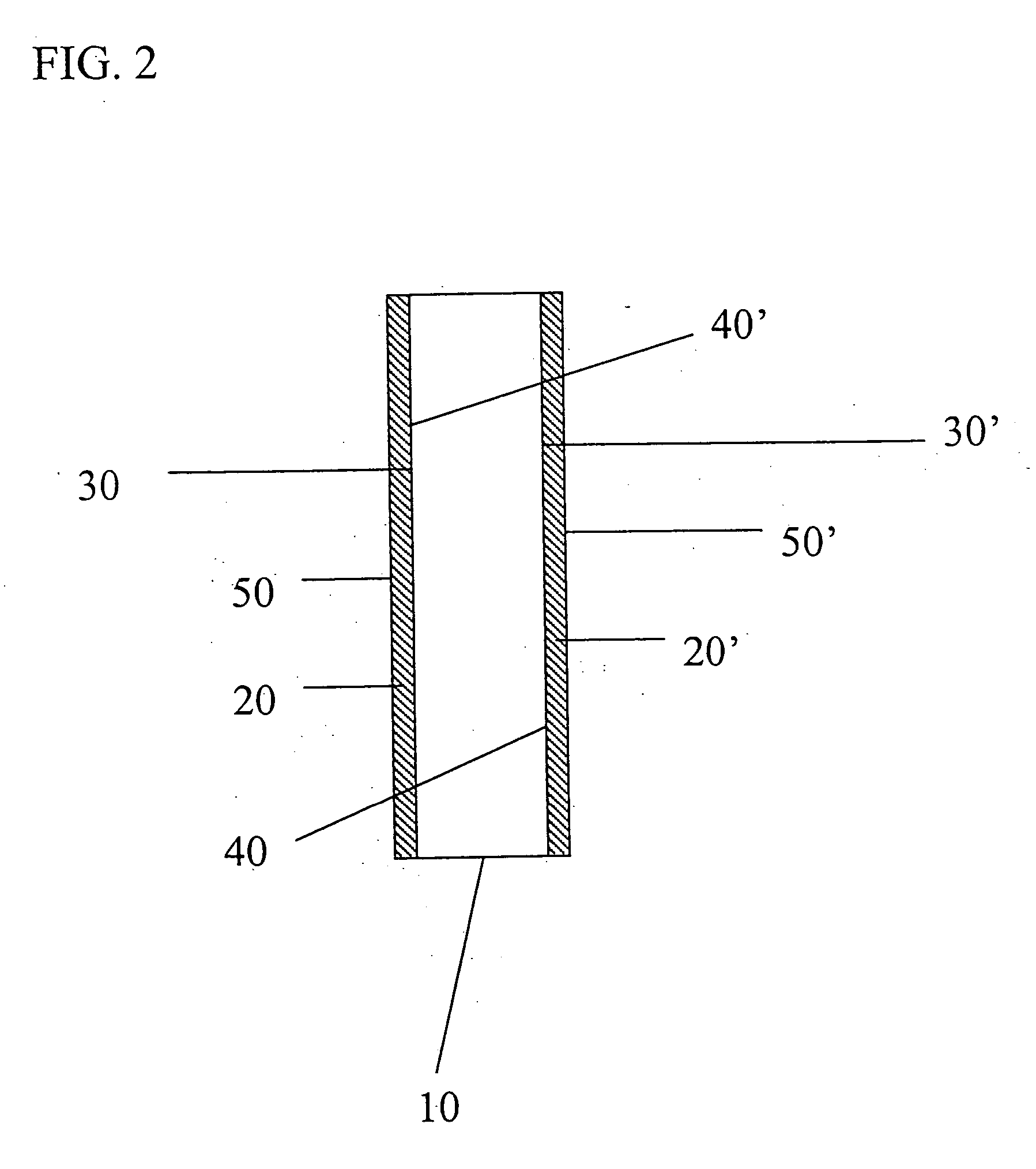Building product using an insulation board
- Summary
- Abstract
- Description
- Claims
- Application Information
AI Technical Summary
Benefits of technology
Problems solved by technology
Method used
Image
Examples
Embodiment Construction
[0019] Generally, the foamed coating composition applied to the preferred preformed mat contains on a dry weight basis between about 15 and about 80 wt. % of the polymer latex, between 0.01 and about 80 wt. % filler, between about 0.5 and about 10 wt. % foam supporting surfactant(s) and 0 to 15 wt. % extraneous additives. Appropriate facers and boards for the present invention are found in U.S. Pat. Nos. 6,365,533, 6,368,991 and pending U.S. application Ser. No. 10 / 117,912, which are incorporated herein by reference. However, the board and facers are not limited to these embodiments, any board and facer providing the same functionality can be used.
[0020] The fibers of the mat employed in this invention can include any of the non-cellulosic types, such as fibers of glass, polyester, polypropylene, polyester / polyethylene / teraphthalate copolymers, hybrid types such as polyethylene / glass fibers and other conventional non-cellulosic fibers. Mats having glass fibers in random orientation...
PUM
 Login to view more
Login to view more Abstract
Description
Claims
Application Information
 Login to view more
Login to view more - R&D Engineer
- R&D Manager
- IP Professional
- Industry Leading Data Capabilities
- Powerful AI technology
- Patent DNA Extraction
Browse by: Latest US Patents, China's latest patents, Technical Efficacy Thesaurus, Application Domain, Technology Topic.
© 2024 PatSnap. All rights reserved.Legal|Privacy policy|Modern Slavery Act Transparency Statement|Sitemap



